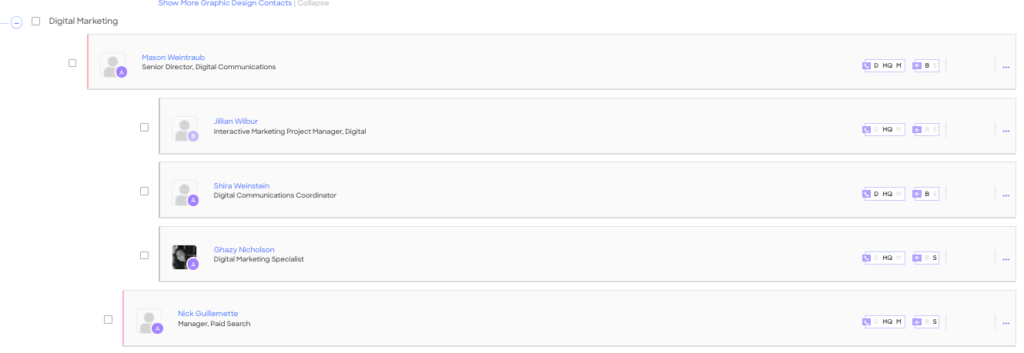So you want to start selling to the healthcare industry. Where should you even start?
You can’t just hope for healthcare leads to appear in your pipeline by using a traditional (read: outdated) spray and pray lead generation strategy. You wouldn’t buy a product from someone who knew nothing about your company, would you?
For this exercise, pretend you work at a digital marketing agency that helps healthcare organizations digitally transform their practices to improve patient satisfaction.
Here’s how to get started.
1. Research Industry: Segment and Identify Pain Points
Healthcare is a broad industry with market segmentation that ranges from obvious sectors, like hospitals and private practices, to parallel but more specific categories like medical supplies.
As a digital marketing agency trying to break into the healthcare industry, you could combine technographic information such as a company’s existing tech stack, with industry KPIs like patient satisfaction scores.
It’s important to learn about the perspective of your various buyer personas in order to create content that resonates with them. Understanding hyper-specific terms and key performance indicators is the first step — then you should incorporate prospects’ pain points into your sales strategy.
Consider the universally important term patient experience, (PX), a key quality outcome metric that refers to all interactions that influence patient perceptions across the spectrum of care. Let’s say your agency is targeting mid-sized hospitals. To hone in on messaging that targets prospects’ problems, identify healthcare organizations with below-average patient experience scores. Using ZoomInfo’s platform, you can filter through millions of results to find the exact segments you need.
2. Create Ideal Customer Profiles (ICPs)
Once you’ve determined key pain points and general knowledge about the healthcare industry, you can start to build out your ideal customer profiles, or ICPs. ICPs represent best-fit customers based on firmographic, technographic, and behavioral attributes.
Going back to our example — your digital marketing agency is likely to have better success with organizations that already have a marketing automation platform implemented to support their web properties. This is just one example of what makes up an ICP.
ICPs help you to segment your total addressable market (TAM) within the healthcare and medical industry because they won’t all be a perfect fit for your solution.
ICPs allow you to determine which companies, organizations, or institutions would benefit the most from your product, which then automatically makes your pitch more appealing.
3. Develop Targeted, Personalized Content
Content in the form of blogs, infographics, and social media are typically the first thing a potential customer will see, before even speaking with a sales rep. So making a good first impression is imperative.
To continue our above example, as a digital marketing agency looking to gain clients in the healthcare industry, creating and sharing quality information that your prospects might not be able to find anywhere else is the key to getting them into the pipeline. The ultimate goal is educating your audience about your product, and the value it could add to their organizations.
Be sure to create content for multiple stages of the funnel, such as blog posts for more top of funnel reads, and eBooks for more middle-funnel consumption.
You can also go one layer deeper using intent data to personalize your content. Streaming intent tells you what your customers are searching for, when they’re searching for it, and where. For example, maybe a small private practice is searching for a digital marketing agency (like yours) to help them rebrand as well as build out a CRM system. With intent signals, you can know when they’re searching, and therefore when to reach out.
4. Analyze Org Charts
If you’re selling to a small private practice, maybe you’re only speaking to one decision-maker. But if you’re trying to sell to a large hospital or a pharmaceutical company, you could potentially be dealing with an entire procurement department.
Features like ZoomInfo’s Org Charts can provide you with the information you need in order to ensure you’re targeting the right people at targeted healthcare organizations.
So, how do you actually use an org chart? Again, going back to our example we can see below a team hierarchy, and target the Senior Director of Digital Communications, rather than the Paid Search Manager who likely doesn’t have budget insight or purchasing power.

Healthcare Lead Gen, COVID-19 & Beyond
While healthcare offices have been struggling with the decline of their non- COVID-19 patients, and major purchases may be put on hold, there is light at the end of the tunnel. And the medical care that has been postponed will inevitably resume when it is safe to do so. This means all of those visits and surgeries canceled will be rescheduled, and the healthcare industry will see an uptick in clients. And when they do, you’ll be ready to help them out.

